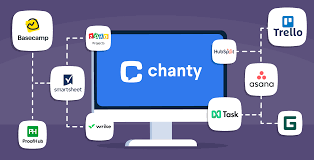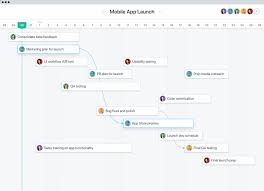Exploring the Benefits of Linux 32-bit Download for Your System
The Benefits of Linux 32-bit Download
Linux, the popular open-source operating system, offers a 32-bit version that caters to users with older hardware or specific software requirements. While 64-bit systems have become more prevalent, there are still advantages to opting for the Linux 32-bit download.
Compatibility
One of the key benefits of using a Linux 32-bit system is compatibility. Some older hardware or software applications may only work optimally on a 32-bit architecture. By choosing the Linux 32-bit download, you ensure that your system can run legacy programs without compatibility issues.
Resource Efficiency
For systems with limited resources, such as older computers or devices with lower memory capacity, a 32-bit operating system can be more resource-efficient compared to its 64-bit counterpart. This can result in smoother performance and better responsiveness for tasks that do not require extensive computational power.
Lightweight Distribution Options
Many lightweight Linux distributions are available in a 32-bit version, making them ideal for older hardware or devices with limited capabilities. These distributions are designed to be fast, efficient, and suitable for running on less powerful machines while still providing access to essential software and tools.
Specific Software Requirements
In some cases, certain software applications may only be compatible with a 32-bit operating system. By opting for the Linux 32-bit download, you can ensure that you can run these specific applications without encountering any issues related to architecture compatibility.
Community Support
The Linux community is known for its inclusivity and supportiveness. Whether you choose the 32-bit or 64-bit version of Linux, you can rest assured that there is a vast community of users and developers ready to provide assistance, share knowledge, and offer solutions to any challenges you may encounter.
In conclusion, while the industry trend may be moving towards 64-bit computing, there are still valid reasons to consider downloading and using a Linux 32-bit distribution. Whether it’s for compatibility reasons, resource efficiency, specific software requirements, or simply personal preference, the availability of a 32-bit option ensures that Linux remains versatile and accessible to all users.
Top 5 Advantages of Downloading Linux 32-Bit: Compatibility, Efficiency, and Community Support
- Enhanced compatibility with older hardware and software
- Resource-efficient for systems with limited resources
- Availability of lightweight distribution options
- Support for specific software applications that require a 32-bit system
- Access to a supportive Linux community for assistance and knowledge sharing
Challenges of Downloading Linux 32-Bit: Memory Limits, Performance Constraints, and Software Compatibility
- Limited Memory Addressing
- Decreased Performance for High-End Applications
- Compatibility Issues with Newer Software
Enhanced compatibility with older hardware and software
The Linux 32-bit download offers enhanced compatibility with older hardware and software, making it an ideal choice for users seeking to breathe new life into legacy systems. By opting for the 32-bit version, users can ensure seamless operation of older devices and software applications that may not be fully compatible with newer architectures. This compatibility advantage allows users to maximise the lifespan of their existing hardware and continue using cherished software without encountering compatibility issues, showcasing the flexibility and longevity of Linux as an operating system.
Resource-efficient for systems with limited resources
One significant advantage of opting for a Linux 32-bit download is its resource efficiency, particularly beneficial for systems with limited resources. Older computers or devices with lower memory capacity can benefit from the streamlined nature of a 32-bit operating system, which often requires fewer system resources compared to its 64-bit counterpart. This efficiency can lead to smoother performance and improved responsiveness, making it an ideal choice for tasks that do not demand extensive computational power.
Availability of lightweight distribution options
The availability of lightweight distribution options is a significant advantage of opting for the Linux 32-bit download. These distributions are specifically designed to be fast, efficient, and suitable for running on older hardware or devices with limited capabilities. By choosing a lightweight Linux distribution in 32-bit format, users can enjoy a smooth and responsive computing experience without the need for high computational power, making it an ideal choice for those seeking optimal performance on less powerful machines.
Support for specific software applications that require a 32-bit system
One significant advantage of opting for a Linux 32-bit download is the support it provides for specific software applications that necessitate a 32-bit system. In cases where certain programs or tools are designed to run exclusively on a 32-bit architecture, choosing the Linux 32-bit version ensures seamless compatibility and smooth operation of these applications without any architectural conflicts. This capability allows users to access and utilise a wide range of specialised software that may be crucial for their work or interests, demonstrating the flexibility and adaptability of Linux in meeting diverse user needs.
Access to a supportive Linux community for assistance and knowledge sharing
One significant advantage of opting for a Linux 32-bit download is the access it provides to a supportive community of Linux enthusiasts who are always ready to offer assistance, share valuable knowledge, and provide solutions to any challenges users may encounter. This collaborative environment fosters a sense of camaraderie and inclusivity, making it easier for individuals to navigate the intricacies of the operating system and leverage the collective expertise of the community for a more enriching user experience.
Limited Memory Addressing
One significant drawback of Linux 32-bit download is the limited memory addressing capability it presents. Due to the inherent architecture of 32-bit systems, there is a restriction on the amount of RAM that can be effectively utilised. This limitation can hinder performance, especially on systems with higher memory requirements, as the operating system may struggle to fully leverage available resources, leading to potential bottlenecks and reduced efficiency in handling memory-intensive tasks. Users seeking to maximise their system’s memory capacity may find this constraint a significant drawback when opting for a Linux 32-bit installation.
Decreased Performance for High-End Applications
One significant drawback of opting for a Linux 32-bit download is the decreased performance it may bring when running high-end applications. Due to the limitations of the 32-bit architecture in fully utilising the advanced capabilities of modern hardware, tasks that require substantial resources may experience reduced performance. This can be particularly problematic for users who rely on their systems to handle resource-intensive applications efficiently, as the 32-bit architecture may not be able to harness the full power of cutting-edge hardware components, ultimately impacting overall performance and responsiveness.
Compatibility Issues with Newer Software
One significant drawback of opting for a Linux 32-bit download is the potential compatibility issues with newer software applications that are specifically developed for 64-bit systems. As technology advances, more and more software developers are focusing their efforts on creating applications that leverage the capabilities of 64-bit architecture. This can lead to challenges for users of Linux 32-bit systems, as they may encounter limitations or incompatibilities when attempting to run the latest software releases designed exclusively for 64-bit platforms.











